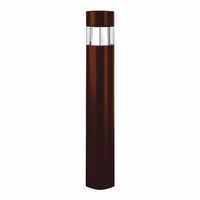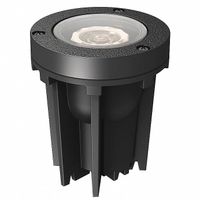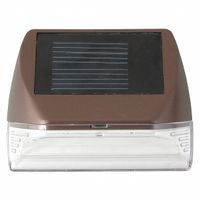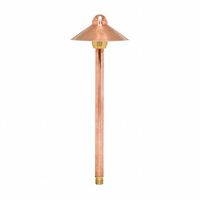Call +(254) 703 030 000 / 751 483 999 / 721 704 777
- Home
- Lighting
- Outdoor Lighting
- Landscape Lighting
Landscape Lighting
Outdoor landscape lighting casts light onto outdoor spaces to increase visibility, prevent accidents, and draw attention to landscaped areas, such as lawns, gardens, and planting beds. Landscape flood and accent lights highlight specific outdoor features, such as gardens and gazebos. In-ground well .....Read More
Frequently Asked Questions
What are the benefits of outdoor landscape lighting?
Outdoor landscape lighting offers numerous benefits, enhancing both the aesthetic and functional aspects of a property. Firstly, it significantly improves safety and security. Well-lit pathways, driveways, and entry points reduce the risk of accidents and deter potential intruders by eliminating dark areas where they might hide.
Aesthetically, landscape lighting accentuates the architectural features of a home and highlights the beauty of gardens, trees, and other landscape elements. It creates a welcoming ambiance, making outdoor spaces more inviting for evening gatherings and enhancing curb appeal, which can increase property value.
Functionally, outdoor lighting extends the usability of outdoor spaces. Patios, decks, and gardens can be enjoyed after sunset, providing more opportunities for outdoor entertainment and relaxation. This is particularly beneficial during longer nights or in regions with shorter daylight hours.
Moreover, landscape lighting can be energy-efficient and environmentally friendly. With advancements in LED technology and solar-powered options, homeowners can reduce energy consumption and minimize their carbon footprint while enjoying the benefits of outdoor lighting.
Finally, outdoor lighting can be customized to suit personal preferences and needs. With various styles, colors, and intensities available, homeowners can create a tailored lighting scheme that complements their landscape design and personal taste. This customization allows for creative expression and the ability to adapt lighting to different occasions or seasons.
How do I choose the right type of landscape lighting for my yard?
To choose the right type of landscape lighting for your yard, start by assessing your needs and goals. Determine the areas you want to illuminate, such as pathways, driveways, gardens, or architectural features. Consider the purpose of the lighting: safety, security, aesthetics, or a combination.
Next, select the appropriate lighting types. Path lights are ideal for walkways and driveways, providing safety and guidance. Spotlights or uplights can highlight trees, sculptures, or architectural elements, creating dramatic effects. Floodlights are suitable for broad coverage, enhancing security. Deck and step lights improve safety on stairs and decks.
Choose the right power source. Solar lights are energy-efficient and easy to install but may not be as bright or reliable in shaded areas. Low-voltage systems are safe, energy-efficient, and offer consistent brightness. Line-voltage systems provide powerful illumination but require professional installation.
Consider the style and material of the fixtures. Match the lighting style with your home’s architecture and landscape design. Durable materials like brass, copper, or stainless steel withstand weather conditions better than plastic.
Evaluate the bulb type. LED bulbs are energy-efficient, long-lasting, and available in various color temperatures. Halogen bulbs offer bright, warm light but consume more energy. Choose the color temperature that complements your landscape, with warmer tones for a cozy feel and cooler tones for a modern look.
Plan the layout strategically. Use a mix of lighting techniques, such as cross-lighting, silhouetting, and shadowing, to create depth and interest. Avoid over-illumination to prevent glare and light pollution.
Finally, consider maintenance and budget. Opt for fixtures that are easy to clean and replace. Balance quality with cost, investing in durable, efficient lighting that fits your budget.
What is the difference between LED and halogen landscape lighting?
LED and halogen landscape lighting differ primarily in energy efficiency, lifespan, heat emission, and cost.
1. **Energy Efficiency**: LEDs (Light Emitting Diodes) are significantly more energy-efficient than halogen bulbs. They use up to 80% less energy, which translates to lower electricity bills and a reduced carbon footprint.
2. **Lifespan**: LED lights have a much longer lifespan, often lasting 25,000 to 50,000 hours, compared to halogen bulbs, which typically last around 2,000 to 4,000 hours. This means LEDs require less frequent replacements, reducing maintenance efforts and costs.
3. **Heat Emission**: LEDs emit very little heat, making them safer to use in various settings and reducing the risk of burns or fire hazards. In contrast, halogen bulbs generate a significant amount of heat, which can be a concern in certain installations.
4. **Cost**: While the initial cost of LED fixtures is higher than that of halogen lights, the long-term savings on energy bills and replacement costs make LEDs more cost-effective over time. Halogen lights have a lower upfront cost but can be more expensive in the long run due to higher energy consumption and shorter lifespan.
5. **Light Quality**: LEDs offer a range of color temperatures and are available in various brightness levels, providing more flexibility in creating desired lighting effects. Halogen lights are known for their warm, natural light but offer less variety in color temperature.
6. **Environmental Impact**: LEDs are more environmentally friendly due to their energy efficiency and longer lifespan, resulting in less waste. Halogen bulbs, being less efficient and shorter-lived, contribute more to environmental waste.
Overall, LEDs are generally preferred for landscape lighting due to their efficiency, longevity, and versatility, despite the higher initial investment.
How do I install outdoor landscape lighting?
1. **Plan the Layout**: Determine the areas you want to illuminate, such as pathways, gardens, or architectural features. Sketch a layout to visualize the placement of lights.
2. **Choose the Lighting**: Select appropriate fixtures like path lights, spotlights, or floodlights. Consider LED options for energy efficiency and durability.
3. **Gather Materials**: Purchase the necessary materials, including lights, a transformer, low-voltage cable, connectors, and a timer or smart controller.
4. **Install the Transformer**: Mount the transformer near an outdoor power outlet. Ensure it is weatherproof and has the capacity to handle the total wattage of your lights.
5. **Lay the Cable**: Run the low-voltage cable from the transformer to the lighting areas. Leave some slack for adjustments and bury the cable a few inches underground or hide it under mulch.
6. **Connect the Lights**: Attach the lights to the cable using connectors. Strip the cable ends, connect them to the light fixtures, and secure with waterproof connectors.
7. **Position the Lights**: Place the lights according to your layout. Adjust the angles and positions to achieve the desired lighting effect.
8. **Test the System**: Turn on the transformer and check each light to ensure they are functioning properly. Make any necessary adjustments to the positioning or connections.
9. **Secure the Installation**: Once satisfied with the setup, bury the cables and secure the lights in place. Use stakes or mounts as needed.
10. **Set the Timer**: Program the timer or smart controller to turn the lights on and off at desired times, optimizing energy use and convenience.
11. **Maintenance**: Regularly check the system for any issues, clean the fixtures, and replace bulbs as needed to maintain optimal performance.
How can I maintain and clean my landscape lighting?
To maintain and clean your landscape lighting, follow these steps:
1. **Regular Inspection**: Check your lighting fixtures regularly for any signs of damage, corrosion, or wear. Look for broken lenses, burnt-out bulbs, or exposed wires.
2. **Cleaning Fixtures**: Turn off the power supply before cleaning. Use a soft cloth or sponge with mild soap and water to clean the exterior of the fixtures. Avoid abrasive materials that can scratch surfaces. Rinse with clean water and dry thoroughly.
3. **Lens Cleaning**: Remove any dirt or debris from the lenses. Use a non-abrasive glass cleaner or a vinegar-water solution to clean glass lenses. For plastic lenses, use a mild soap solution.
4. **Bulb Replacement**: Replace burnt-out bulbs with the correct wattage and type recommended by the manufacturer. Ensure the power is off before replacing bulbs.
5. **Check Connections**: Inspect electrical connections for corrosion or looseness. Tighten any loose connections and clean corroded ones with a wire brush. Apply dielectric grease to prevent future corrosion.
6. **Adjust Fixtures**: Ensure fixtures are properly aligned and adjust them if necessary to maintain the desired lighting effect. Trim any overgrown plants that may obstruct the light.
7. **Test the System**: After maintenance, turn the power back on and test the system to ensure all lights are functioning correctly.
8. **Seasonal Maintenance**: In colder climates, check for frost heave that may have shifted fixtures. In warmer climates, ensure fixtures are not overheating.
9. **Professional Check-Up**: Consider an annual professional inspection to ensure the system is in optimal condition and to address any complex issues.
Regular maintenance not only extends the life of your landscape lighting but also enhances the safety and aesthetics of your outdoor space.
What are the best brands for outdoor landscape lighting?
Some of the best brands for outdoor landscape lighting include:
1. **Kichler**: Known for its high-quality and durable lighting solutions, Kichler offers a wide range of styles and finishes, making it a popular choice for both residential and commercial landscapes.
2. **Hinkley Lighting**: This brand is renowned for its stylish and energy-efficient outdoor lighting options. Hinkley provides a variety of designs that blend functionality with aesthetic appeal.
3. **FX Luminaire**: Specializing in LED landscape lighting, FX Luminaire is favored for its innovative technology and customizable lighting systems, which allow for precise control over lighting effects.
4. **Volt Lighting**: Volt is known for its professional-grade landscape lighting products that are both durable and affordable. They offer a lifetime warranty on many of their fixtures, ensuring long-term reliability.
5. **WAC Landscape Lighting**: This brand offers a range of energy-efficient and eco-friendly lighting solutions. WAC is appreciated for its modern designs and advanced technology, including smart lighting options.
6. **Hadco**: A Philips brand, Hadco provides high-quality outdoor lighting fixtures that are both stylish and functional. They are known for their robust construction and innovative designs.
7. **Cast Lighting**: Specializing in solid bronze and copper fixtures, Cast Lighting is known for its rugged and durable products that withstand harsh outdoor conditions.
8. **Unique Lighting Systems**: This brand offers a wide array of customizable lighting solutions, known for their durability and innovative designs that cater to various landscape lighting needs.
9. **Garden Light LED**: Focused on LED technology, Garden Light LED provides energy-efficient and long-lasting lighting solutions with a focus on quality and design.
10. **Lumens**: Known for its contemporary designs, Lumens offers a variety of stylish and functional outdoor lighting options that cater to modern landscape aesthetics.
How much does it cost to install landscape lighting?
The cost to install landscape lighting can vary widely based on several factors, including the type of lighting, the size of the area, the complexity of the installation, and the quality of the fixtures. On average, homeowners can expect to pay between $2,000 and $4,500 for a professionally installed landscape lighting system. Here are some key considerations:
1. **Type of Lighting**:
- **Pathway Lights**: Typically cost between $50 and $150 per light.
- **Spotlights**: Range from $100 to $200 each.
- **Floodlights**: Can cost between $150 and $300 per light.
- **Well Lights**: Usually priced between $100 and $250 each.
2. **Number of Lights**: The total number of lights needed will significantly impact the overall cost. A small yard may require 10-15 lights, while a larger property might need 30 or more.
3. **Quality of Fixtures**: High-quality, durable fixtures made from materials like brass or copper will cost more than plastic or aluminum options but offer better longevity and aesthetics.
4. **Installation Complexity**:
- **Simple Installations**: Involving straightforward wiring and placement may cost less.
- **Complex Installations**: Involving intricate designs, hard-to-reach areas, or additional features like timers and smart controls can increase labor costs.
5. **Labor Costs**: Professional installation typically ranges from $60 to $100 per hour. The total labor cost will depend on the complexity and duration of the project.
6. **Additional Costs**:
- **Transformers**: Required for low-voltage systems, costing between $200 and $500.
- **Wiring and Connectors**: Can add $100 to $500 to the total cost.
DIY installation can reduce costs but may require purchasing or renting tools and equipment.





